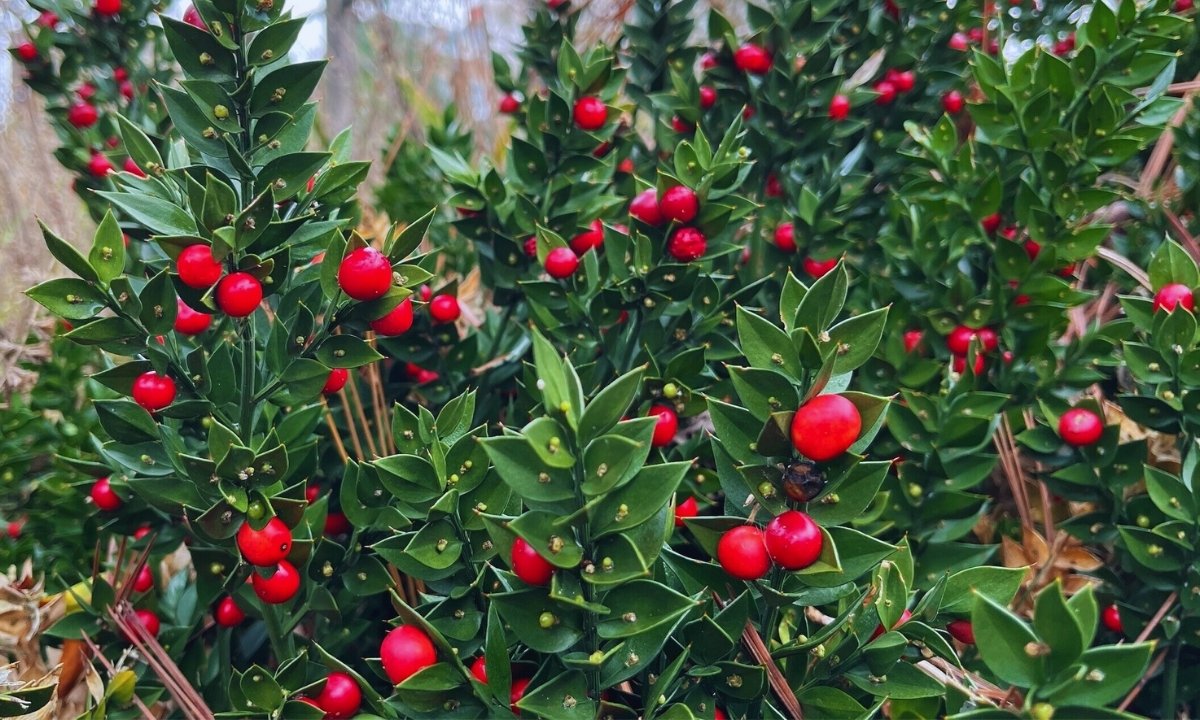
Ruscus might not be a household name, but this hardy plant has some surprising qualities. Known for its evergreen leaves and small, star-shaped flowers, Ruscus is a favorite among gardeners and florists alike. But did you know it can thrive in low light and requires minimal water? Ruscus is not just a pretty face; it’s also used in traditional medicine for its anti-inflammatory properties. Whether you’re a plant enthusiast or just curious, these 31 facts about Ruscus will give you a new appreciation for this versatile plant. Ready to learn more? Let’s dive in!
What is Ruscus?
Ruscus, also known as butcher's broom, is a hardy evergreen shrub. Its unique appearance and low maintenance make it a popular choice for gardens and floral arrangements. Let's dive into some fascinating facts about this versatile plant.
-
Ruscus belongs to the Asparagaceae family, which also includes asparagus and agave.
-
This plant is native to Europe, particularly the Mediterranean region.
-
Ruscus is known for its tough, spiky leaves that can deter pests and animals.
-
The plant produces small, inconspicuous flowers that are often overlooked.
-
Despite its modest flowers, Ruscus can produce bright red berries that add a pop of color.
Uses of Ruscus
Ruscus isn't just a pretty plant; it has practical uses too. From medicinal properties to decorative purposes, Ruscus serves multiple roles.
-
Historically, Ruscus was used by butchers to clean their cutting boards, hence the name "butcher's broom."
-
The plant has been used in traditional medicine to treat circulatory problems and hemorrhoids.
-
Ruscus extracts are believed to have anti-inflammatory and diuretic properties.
-
Florists often use Ruscus in bouquets and arrangements due to its long-lasting foliage.
-
The plant's sturdy branches make it ideal for creating wreaths and garlands.
Growing Ruscus
Interested in growing Ruscus in your garden? Here are some tips and facts to help you get started.
-
Ruscus thrives in well-drained soil and can tolerate a range of light conditions, from full sun to deep shade.
-
The plant is drought-resistant, making it a low-maintenance option for gardeners.
-
Ruscus can be propagated through division or by planting seeds.
-
It is relatively pest-free, though it can occasionally attract spider mites.
-
The plant can grow up to 3 feet tall, making it a good choice for ground cover or low hedges.
Ruscus in Culture and History
Ruscus has a rich history and cultural significance. Let's explore some interesting tidbits.
-
In ancient Greece, Ruscus was associated with the god Hermes and was believed to have protective properties.
-
The plant was often used in medieval Europe as a charm to ward off evil spirits.
-
Ruscus has been depicted in various works of art, symbolizing resilience and protection.
-
In some cultures, the plant is used in wedding ceremonies to symbolize longevity and fidelity.
-
The berries of Ruscus are sometimes used in traditional Christmas decorations.
Fun Facts About Ruscus
Here are some quirky and fun facts that you might not know about Ruscus.
-
Ruscus leaves are actually modified stems called cladodes, which perform photosynthesis.
-
The plant's berries are technically fruits, containing seeds that can be used for propagation.
-
Ruscus can live for several decades, making it a long-term addition to any garden.
-
The plant's name, "butcher's broom," comes from its historical use in cleaning butcher's blocks.
-
Ruscus is often used in topiary art due to its dense foliage and easy shaping.
Ruscus in Modern Times
Ruscus continues to be relevant today, both in horticulture and beyond. Here are some modern uses and trends.
-
The plant is popular in xeriscaping, a landscaping method that reduces or eliminates the need for irrigation.
-
Ruscus is often used in green walls and vertical gardens due to its hardiness and aesthetic appeal.
-
The plant's extracts are being studied for potential use in skincare products.
-
Ruscus is a favorite among florists for its ability to add texture and greenery to arrangements.
-
The plant is also used in eco-friendly packaging, replacing plastic fillers with natural materials.
-
Ruscus is gaining popularity as a houseplant, thanks to its low maintenance and attractive appearance.
The Final Word on Ruscus
Ruscus, often overlooked, packs a punch in both beauty and utility. This hardy plant thrives in various conditions, making it a gardener's dream. Its evergreen leaves and unique berries add year-round charm to any garden. Beyond aesthetics, Ruscus has a rich history in traditional medicine, offering anti-inflammatory and diuretic benefits. It's also a favorite in floral arrangements, thanks to its long-lasting foliage.
Whether you're a seasoned gardener or a newbie, Ruscus is a versatile addition to your plant collection. Its low-maintenance nature means you can enjoy its beauty without much fuss. Plus, its resilience makes it a reliable choice for various landscaping needs. So, next time you're planning your garden or looking for that perfect plant for a bouquet, consider Ruscus. It’s a small plant with big benefits, ready to impress in any setting.
Was this page helpful?
Our commitment to delivering trustworthy and engaging content is at the heart of what we do. Each fact on our site is contributed by real users like you, bringing a wealth of diverse insights and information. To ensure the highest standards of accuracy and reliability, our dedicated editors meticulously review each submission. This process guarantees that the facts we share are not only fascinating but also credible. Trust in our commitment to quality and authenticity as you explore and learn with us.
